
1989-2003 Conrad Allen
Conrad Allen, the son of an actor and grandson of a White City greyhound stadium bookmaker, was better known is his early days as the star of TV advertisements, eating Rice Krispies, Jaffa Cakes and Smarties, or having his blond hair washed with Vosene. He then began working in the Williams & Glyn Bank in London, reportedly earning £150 a week (equivalent to £650 a week in 2020) before choosing to work in stables for £15 a week (£65 in 2020). He began with Tim Moloney before moving on Alan Bailey, but then moved to Mick Ryan where he earned a few rides. He became a moderately successful jockey, winning just 4 races from 60 rides, the first of which was aboard Habat Raaphorst at Folkestone in August 1983. That was followed in quick succession with a further win on the same horse at Newcastle just a week later.
The photo opposite, shown courtesy of Harry Downs senior, is of Miss Shadowfax in 1991.
29/7/1991 Wolverhampton Mis Shadowfax (16/1) owned by Shadowfax Racing, trained by Conrad Allen and ridden by G Foster
26/8/1991 Wolverhampton Mis Shadowfax (5/1) owned by Shadowfax Racing, trained by Conrad Allen and ridden by Gary Bardwell
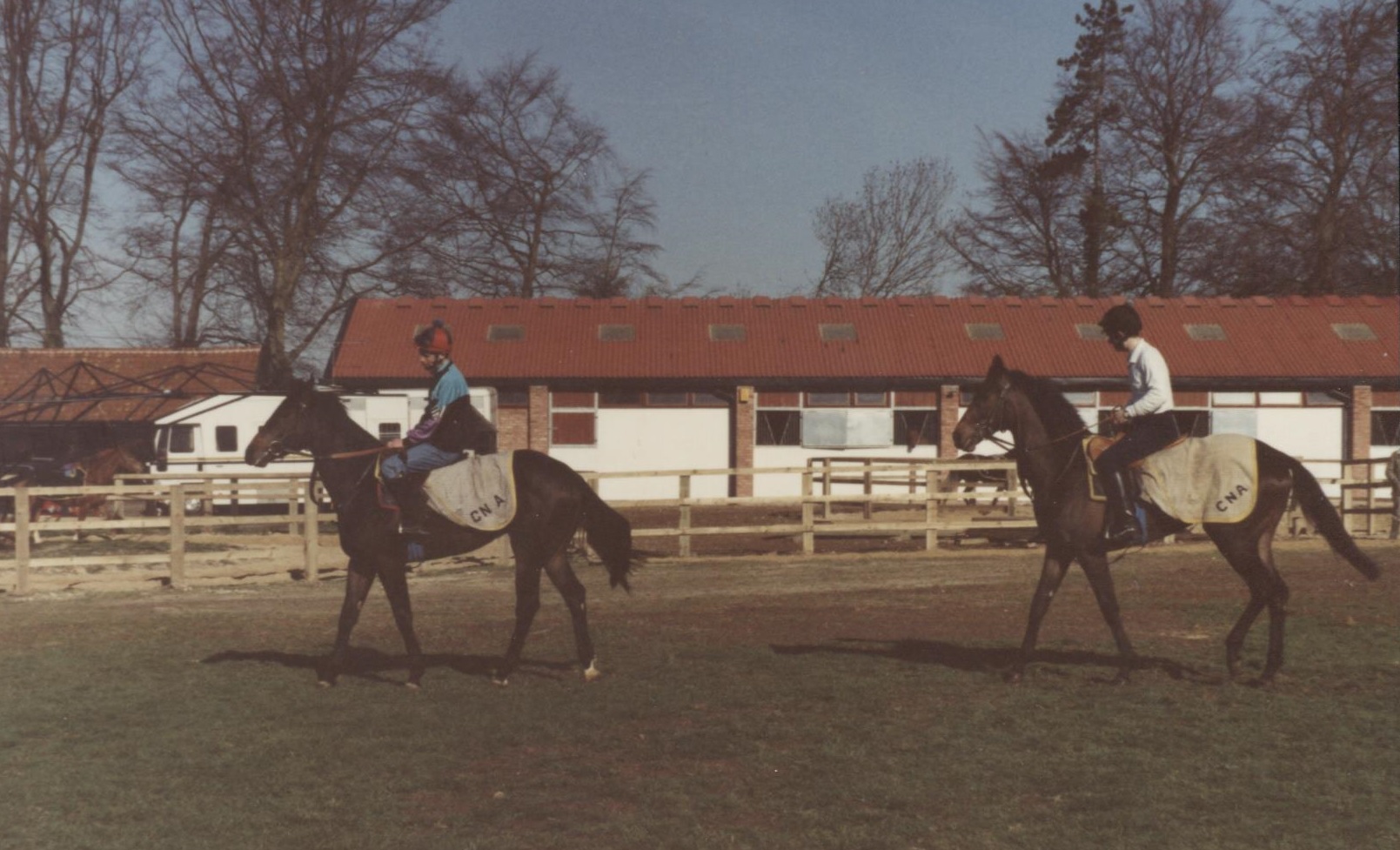
For over 4 centuries racing has been staged in Newmarket, but how have the racecourses evolved from an initial starting point at Fleam Dyke Pumping Station, some 8 miles from the town, with a winning post barely 200 metres from the town centre, into two world recognized, excellent racecourses and a universal acceptance that Newmarket is the Headquarters of racing?
To access an interactive racecourse map showing over 50 individually named racecourses CLICK HERE. The map will enable you to:-
1. Determine when extended races over 8 miles, 6 miles and 4 miles began to be replaced by the courses now visited by thousands annually;
2. Consider how the challenge of crossing the Devil's Dyke was overcome;
3. Contemplate why the town no longer has a steeplechase course despite having at least 5 courses during the past 2 centuries;
4. Examine the practicalities of having up to 48 starting posts and winning posts;
5. Appreciate that it was not financially viable to have an open racecourse spread widely across the heath, with a finishing post barely 200 metres from the town centre;
6. Research how and why the Cambridgeshire Handicap has been contested over 3 different courses.
NOTE: The map does not make mention of 2 particular courses:-
(i) Sefton Course (also known as the Cambridge Road Course)
Source: 1970 Raceform. Used from 1959 to 1975.
(ii) New Circular Course
The Circular Handicap was run on Friday 29th October 1875 on the New Circular Course of about two miles.
Source: London Standard (30th October 1875): ''the horses started near the Turn of the Lands, ran back way of the Cambridgeshire Course towards the Ditch, and afterwards proceeded down the side of the Tan Gallop, and turned into the Rowley Mile near the Bretby Stakes starting post, finishing at the stand at the end of the flat. Except in the hollow near the Cambridgeshire start the runners should have been visible all the way if the sky had been bright and clear''.
Another report hoped that the Circular Handicap would become a feature in future programmes, as it would be contested in front of the new grandstand which would be completed in about a year and would be able to accommodate thousands.
(I am grateful to Tim Cox for bringing attention to these 2 courses.)
Enjoy researching the intriguing history of Newmarket and its many racecourses.
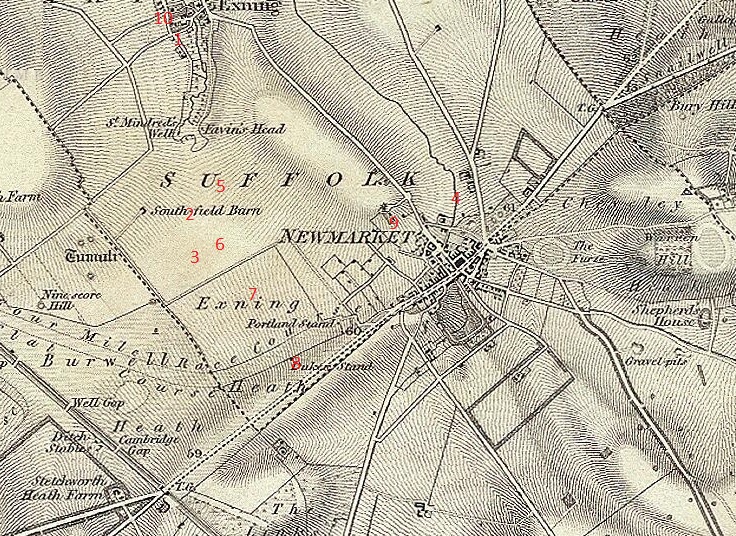
Maybe there was racing in his blood, passed down from his grandfather, for he launched his training career in 1987, going on to purchase Shadowfax Stables in 1989. He suffered an early setback at Shadowfax when, in August 1989, he had to close the stables for a few weeks and isolate his 35 horses due to an outbreak of equine flu. Nevertheless, he increased the number of boxes at Shadowfax over time until the estate contained his bungalow and a 40-box American barn.
1983 Twigg Apprentice Handicap Stakes at Folkestone HABAT RAAPHORST 4/1 trained by Mick Ryan and ridden by Conrad Allen
1983 Morpeth Handicap at Newcastle HABAT RAAPHORST 9/2 trained by Mick Ryan and ridden by Conrad Allen
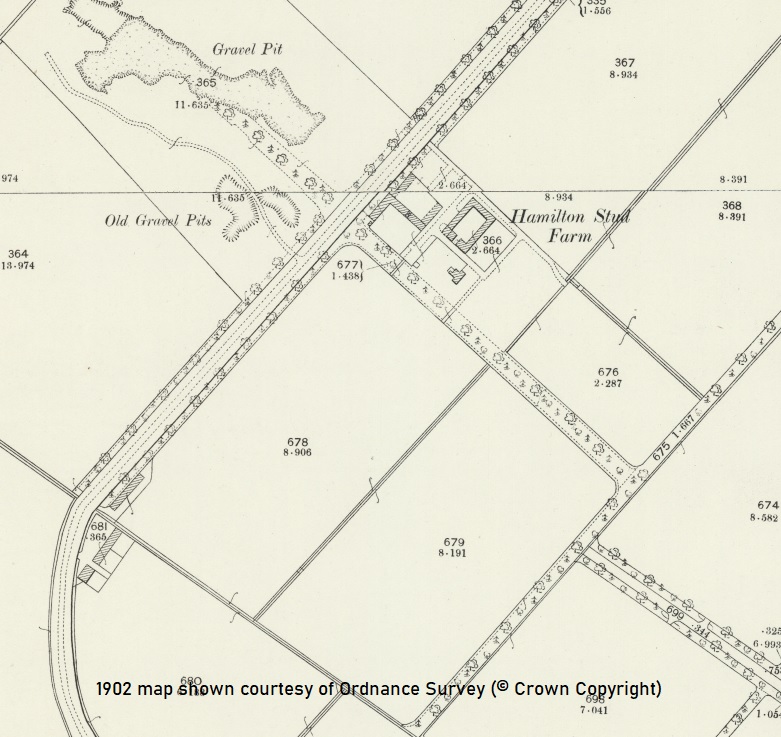
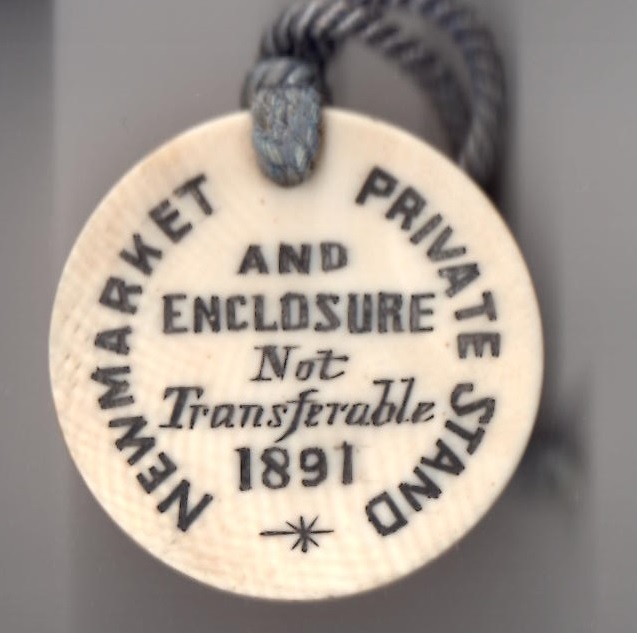
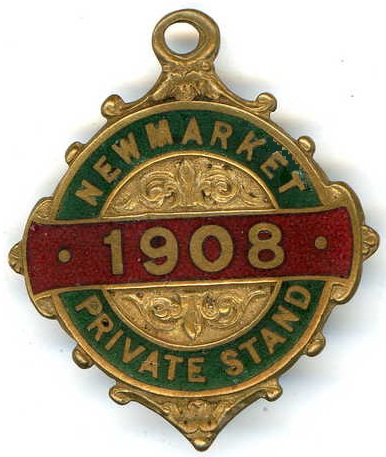
2014-present Darley
Shadowfax is a significant part of Darley's pre-training operation, along with Charlcombe Lodge, where they also installed a 'state-of-the-art' Seawalker. While all stables appreciate the importance of swimming to a horse's fitness and well-being, very few have had the opportunity to use a seawalker. It is a piece of equipment in which a horse-walker is filled with seawater, and is designed to recreate the healing effects known emanate from a horse walking on the seashore. At Newmarket Open Days it is one of the most sought-after pieces of equipment to be seen by visitors.



